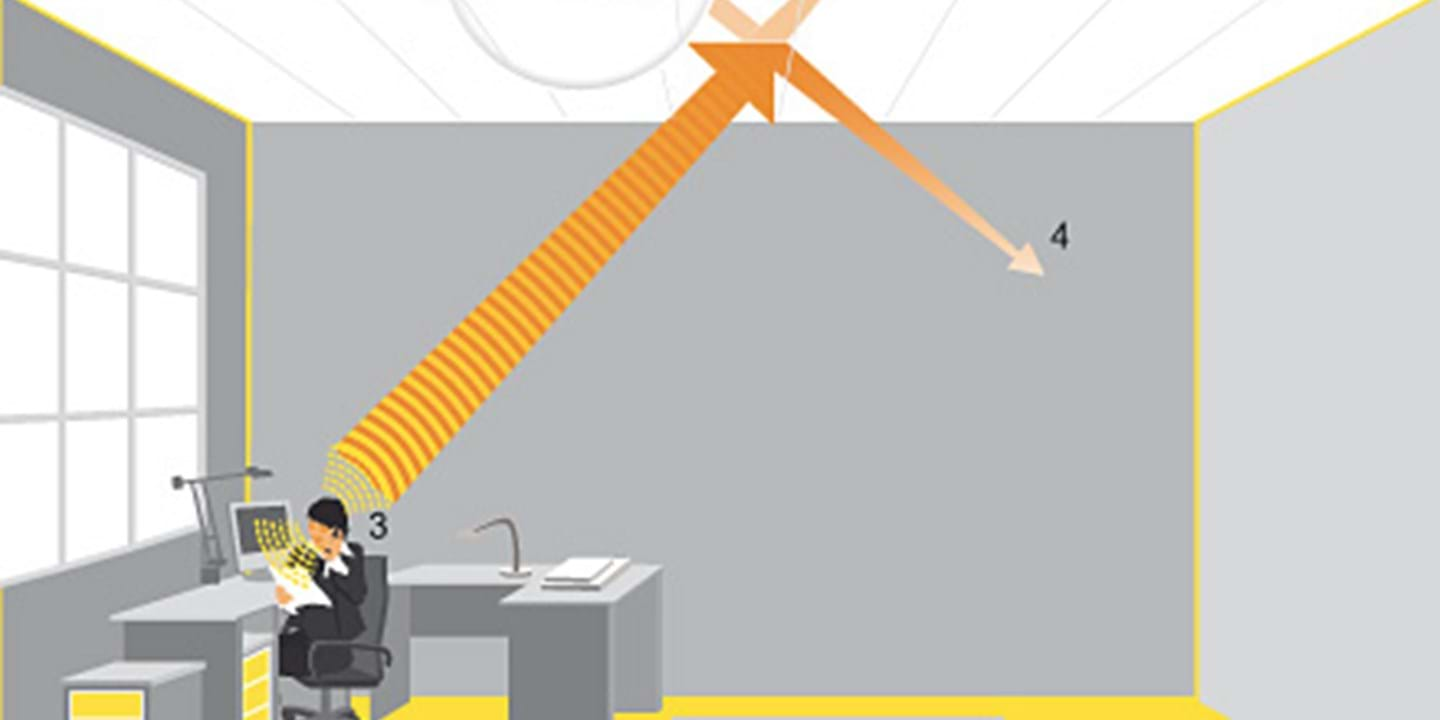Choosing the right sound absorption

α = absorption coefficient
1.Transmitted energy
2. Converted energy
3. Incident energy
4. Reflected energy
When a sound wave strikes one of the surfaces of a room, some of the sound energy is reflected back into the room and some penetrates the surface. Parts of the sound wave energy are absorbed by conversion to heat energy in the material, while the rest is transmitted through. The level of energy converted to heat energy depends on the sound absorbing properties of the material.
A material's sound absorbing properties are expressed by the sound absorption coefficient, α, (alpha), as a function of the frequency. α ranges from 0 (total reflection) to 1.00 (total absorption).
The sound absorption coefficient is normally measured by the room method. The measurements are done in a large room with a diffuse sound field, i.e. the sound has evenly distributed angles of incidence against the test surface.
The measuring method follows an international standard designated EN ISO 354. The corresponding American standard is ASTM C 423 (measurements according to this often show slightly higher figures). The room method is normally used for presenting product information (as in this publication).
Sound absorbing properties are classified according to EN ISO 11654, which gives the sound absorption classes.
